Col·legi Teresianes
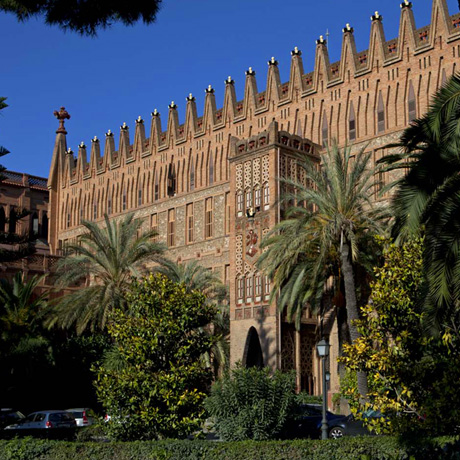
YEAR OF CONSTRUCTION
1888 - 1890
ADDRESS
Carrer de Ganduxer, 85 - 105, Barcelona
http://ganduxer.escolateresiana.com/At the time of the celebration of the Universal Exposition of Barcelona, Gaudí was already an acclaimed architect who had begun to build the crypt of the Sagrada Família a few years earlier. Although he was engaged in some large-scale projects with big budgets, his lively interest in architectural work and his religious devotion led him to accept more modest projects such as the Convent and School of the Teresians, in the town of Sant Gervasi de Cassoles.
The artist redid the project which had just been started by Joan Pons i Trabal, maintaining the foundations which had already been laid. Then, without changing the volume or the profile of the plan, he turned what had first been intended to be a simple structure into an architectural masterpiece. The architect confined himself to working imaginatively on the layout of the new building, creating interior courtyards which let in natural lighting.
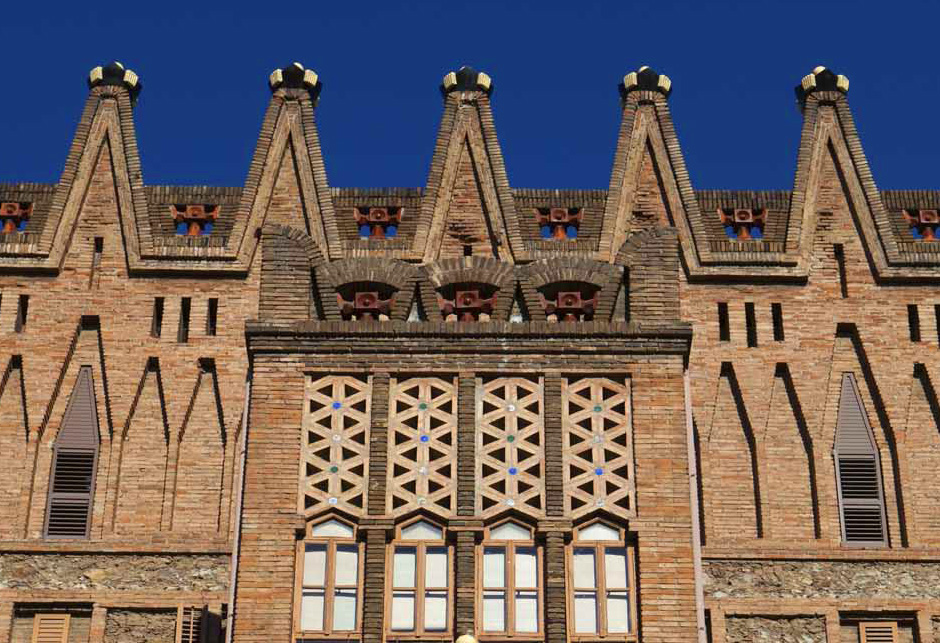
TALENT AND MASTERY, WITH SCANT FUNDS
If Father Enric d’Ossó, founder of the Company of Saint Teresa of Jesus, had not commissioned Gaudí’s services, the land of Can Ganduxer would probably have ended up as the site of an anodyne building of little note. The drawings prepared by the architect Trabal envisaged a conventional rectangular plan with three buildings of similar dimensions and façades in the medievalist style. Overall, in a way very similar to that in which Elies Rogent had just finished erecting the Central University, a building which was considered the pinnacle of local architecture at that time.
However, the priest followed the recommendation of Bishop Grau, who was from Reus like Gaudí and had recently received the design of the Episcopal Palace of Astorga from the architect. For the Teresian project, the client had very scant funds, just the opposite of the case of the Güell Palace, a project which Gaudí was managing at that time. In spite of this, it is admirable to see what an architect of Gaudí’s talent achieved with his mastery of an absolutely traditional technology based on the use of brick and stone.
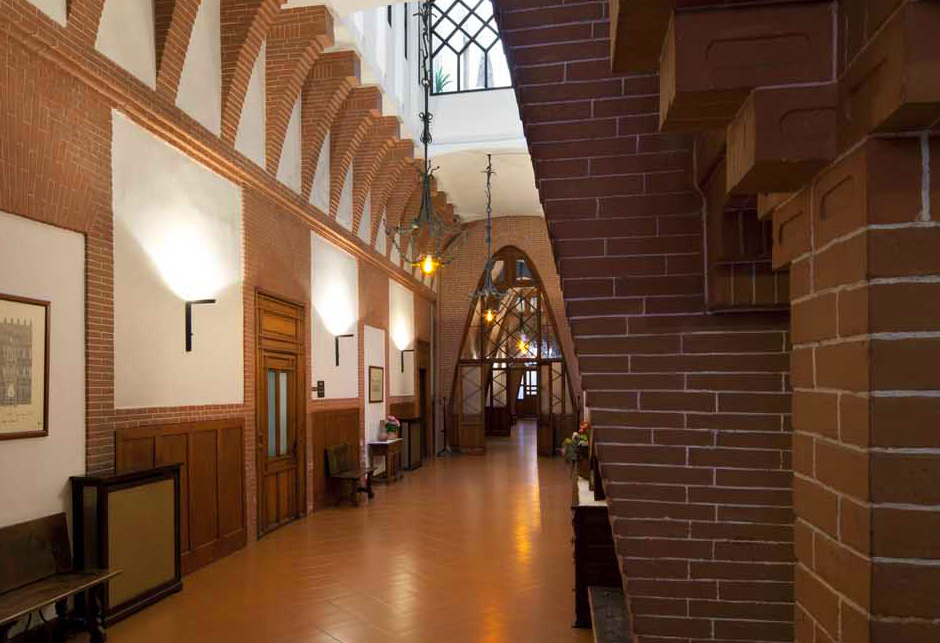
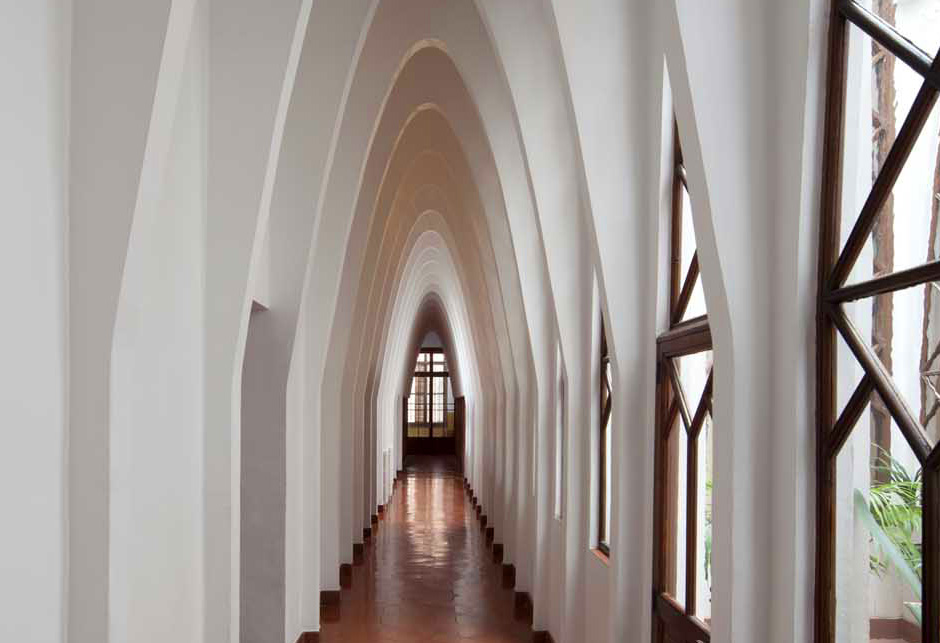
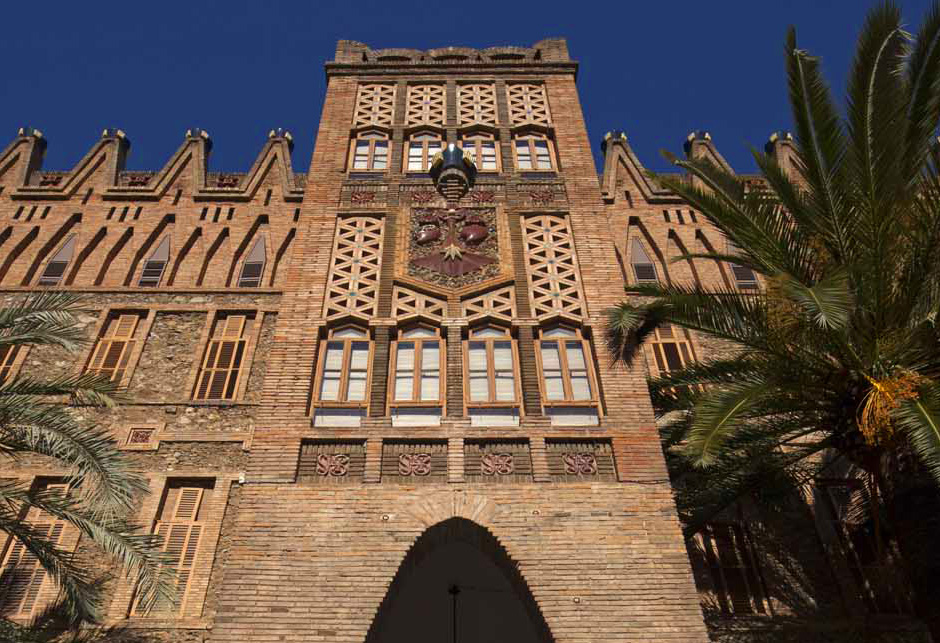
A SOBER “INTERIOR CASTLE”
Gaudí conceived this school as an original Neo-Gothic castle, with a façade combining rubblework and bricks with a remarkable aesthetic result. The incorporation of religious symbols forms the keynote, with anagrams of Jesus Christ, Carmelite blazons, four-armed crosses on the corner towers and doctoral caps on the merlons, in reference to Saint Teresa. Characteristic parabolic arches are also present in the façade, in particular in the windows and in the entrance porch, the latter closed with an elegant wrought iron grille.
The result of the interior was surprising, especially in the corridors and in the main entrance hall on the ground floor. With the arches, Gaudí achieved a remarkable spatial quality which, of course, did not form part of the initial plan. The architect researched and delved deeply into the spirit of the Teresian Order to better fulfil his assignment and, thanks to this approach, the building was given a sober and secluded appearance in the manner of the “interior castle” that is closely connected to the spirituality of the company.
In this respect, the ornamentation here is minimal, austere and functional, appearing with normality on the structural elements and closings. Here too Gaudí anticipates by a number of years the well-known concept of a master of the Modern movement, Ludwig Mies van der Rohe: “Less is more”.
STRAINED RELATIONS WITH “SAINT” ENRIC D’OSSÓ
The relationship between Gaudí and Father Enric d’Ossó, who would come to be canonised as a saint in 1993, was quite worldly. On many occasions the architect had to insist on his ideas in opposition to the demands and criteria which the founder of the Teresians sought to maintain with respect to the building. The arguments between these two strong-willed men had ended more than once with Gaudí telling the priest to “go and say mass” and to leave the details of the project to him as the architect because that was what they were paying him for.
In spite of their occasional disagreements, however, their alliance gave rise to a wonderful convent and school building which has been well kept by the Teresian community and can still be admired today. It was a pity that an agreement was not subsequently reached between Gaudí and the client when it came time to design a new adjoining chapel, due to the fact that the architect could not accept that the chapel would not be open to the public. The chapel which came to be built by Gabriel Borrell i Cardona is in the Neo-Gothic style.
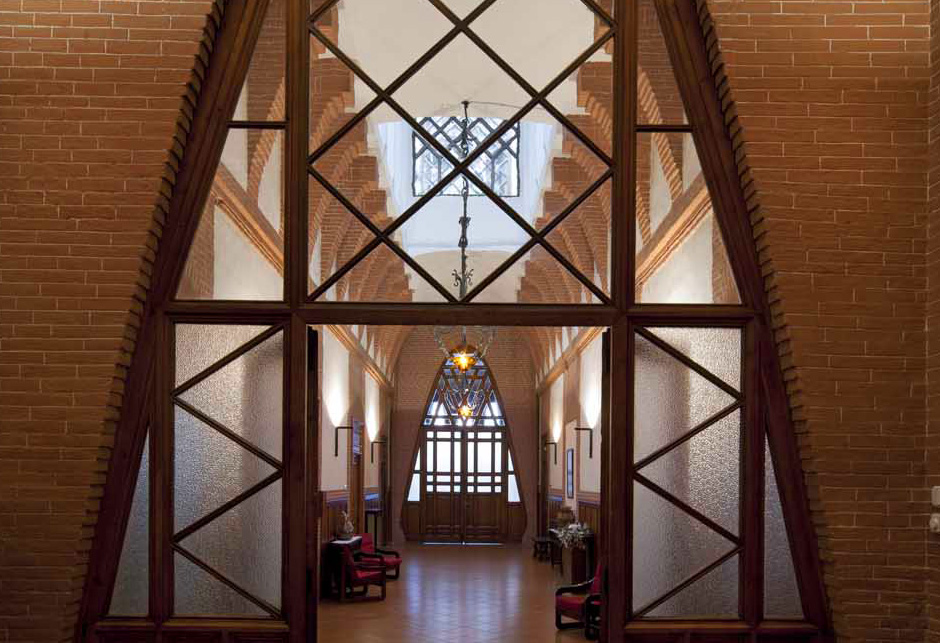
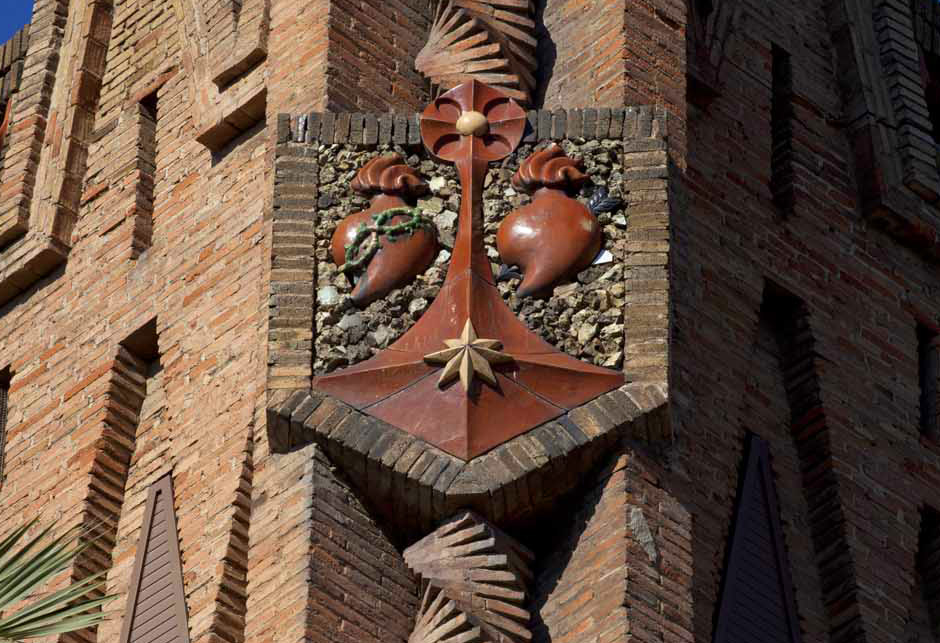
OPENING HOURS
The building is a functioning school and is not open to visits as a monument.
HOW TO GET THERE
Bus: 14, 58, 64, 70
FGC train: L6 - La Bonanova station